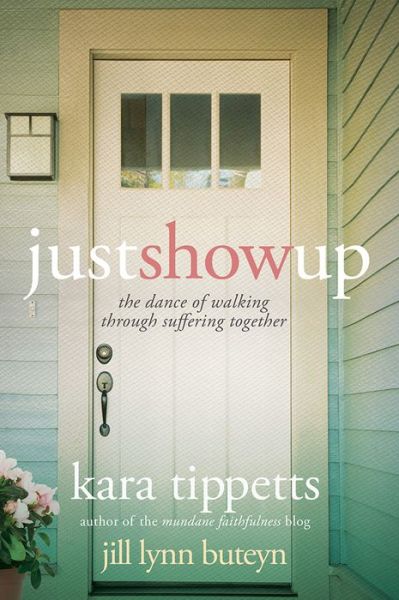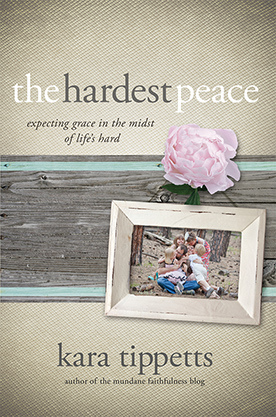“So, chosen by God for this new life of love, dress in the wardrobe God picked out for you: compassion, kindness, humility, quiet strength, discipline. Be even-tempered, content with second place, quick to forgive an offense. Forgive as quickly and completely as the Master forgave you. And regardless of what else you put on, wear love. It’s your basic, all-purpose garment. Never be without it.”
One of my favorite sounds from my childhood is the whirr of Mamma’s sewing machine. It’s a sound that travels gently through the house, an undertone of life, a sound of safety and surety. Mamma loved to sew; she frequently made dresses for me and my sisters or Halloween costumes, costumes for plays we were in, drapes, napkins, tablecloths, doll clothes. You name it, she made it. And no matter where we lived (we moved around a lot!), she brought her sewing machine; the first time in a new house that I heard the whirr, I felt like I was home, and a contentment filled my heart.
As I got older, I loved the clothes Mamma sewed a little less…With five children and moving so often, she started sewing more out of necessity than fun. I can remember the summer I was 12 in a new town, eager to make a cool impression on my peers. Mamma made me three pair of knee-length shorts with elastic waistbands in blue, pink, and yellow. Yikes. I can still feel the way the straight legs pulled on my changing body, restricting me from playing or pedaling or doing anything fun. Yet I knew that those horrid shorts were sewn in love, and deep down I was proud of them.
In high school, I used Mamma’s sewing machine without asking; I had never sewn before, and I didn’t know to put the foot down before stitching. I broke the machine, thankfully not beyond repair, and felt deep disappointment in harming something that was so precious to Mamma. She was devastated to have to take it to the repair shop and be without it for several weeks, and I learned my lesson never to touch her sewing machine without asking.
When senior prom came along, I begged Mamma to sew my dress; I knew she would be able to make something that fit me perfectly—a dress no other girl would have. We picked out a gold-ish fabric with a gold lace to go over it. She spent weeks getting it just right, sewing after she got home from work and sometimes late into the night. On prom night, I felt like a princess! The dress fit like a glove; I felt glamorous and loved.
Mamma learned to sew from her mother, Marmee. Marmee used to love to tell me about the outfits she made Mamma when Mamma was a little girl. Like me, Marmee had one boy and one girl a year apart. She adored Mamma and doted on her. Sixty years later, she could describe, in detail, dresses she painstakingly sewed for her beloved girl. Marmee worked full time, which was rare for a woman in the 1950s; this was before women’s lib, so she did all the housework and cooking on her own. I can’t imagine all the ironing she had to do for the family and the joy she must have felt when polyester made its debut in the world! I asked one time if sewing all of Mamma’s clothes was a burden on top of all of Marmee’s other responsibilities. No, she answered. I loved it!
Marmee loved to sew for me, too. I was not shaped like a typical little girl—I had broad shoulders and a long torso, so I think Marmee delighted in making dresses that fit me well, and I bet she also enjoyed the challenge. One time, she sent a brown dress with ivory polkadots. I was 10 years old, and I thought it was the ugliest thing I had ever seen. Oh, no, Mamma replied. This is beautiful! Look at the silky fabric—this is hard to sew! And the pearl buttons and wide sash. Look at this lace collar! I’ve never seen anything so delicate. And the brown will look beautiful—brown is perfect for blondes. I looked at the dress with new eyes: I imagined Marmee in her sewing room in her basement, painstakingly sewing this slippery fabric, piecing on the lace collar, making sure the shoulders were wide enough for me. Mamma helped me slip it over my head. I looked in the mirror and spun around, the dress lifting in princess swirls. Mamma was right—it was stunning.
I wish I still had that dress. Every favorite dress in my adolescence was made by Marmee. She and Mamma even made my sister’s formal bridesmaids’ dresses in lush green velvet.
I also wish I could tell you that Mamma or Marmee taught me to sew. How I longed to sew as a girl! But Mamma died before teaching me, and Marmee’s sewing days were just about over by the time I was serious about sitting down and learning. Instead, a friend taught me, diligently and patiently and kindly sitting with me week after week as I first sewed a pincushion, then a bathrobe, a skirt, and then a beautiful dress.
I didn’t sew again until I became a mother. I hand-stitched many things, crocheted a ton, knit a few things, but no sewing on the machine until my babies were born. The first night I set up my machine and started sewing curtains for the nursery, my husband said, I love that sound—it reminds me of my childhood.
Last summer, I started a few projects but put them aside when Marmee died. I didn’t do that intentionally—it was a necessity of having to clean up the dining room when family came into town for her funeral. But the longer my projects sat, the less desire I had to finish them. I couldn’t bring myself to drag out my machine; I didn’t have the heart capacity to try to make that emotional connection to Marmee by sewing. And somehow, it felt like the time of her death—and when she was alive—was closer if I just left my project sitting on my dresser instead of finishing it. It represented her last days when I would look at the blue flowered print every day. And those last days are precious and priceless to me.
But finally, out of fear the dress wouldn’t fit my little darling by the time I got around to finishing it, I picked it up and started in again, reading and re-reading the pattern, trying to remember where I was. As I timidly made those first stitches, I looked down and saw my mamma’s hands. I heard her sewing machine. I felt her love. And I felt Marmee’s love. My mind filled with memories of these women, loving through their art, and the tears poured out of my eyes.
How could I ever think that by finishing this project, my connection with Marmee’s life would dissipate? Instead, I found that with each stitch, my connection with Marmee was strengthened. I remembered her love more clearly. I connected with Mamma in ways I never had, simply because she died before I was a woman. I understood her quiet, servant’s love more deeply. I couldn’t stop sewing. I finished that dress and then made another one and another one. I made a shirt and then sewed 24 napkins for a garden party. And then I bought more fabric for more projects.
And as I cut and iron and pin and sew, my own machine whirring 10 feet away from my babies in their beds, I pray that they will fall asleep to this sound of love, that they will never doubt my love for them, and that they will remember the safety of their own mama’s presence. More than that, I pray that they will understand my love is a reflection of God’s love, this God whose heart is for the widow and the orphan and the refugee. This God who loves so gently and tenderly. What a gift that my mamma and Marmee knew Jesus and spilled his love out onto their daughters. I pray I will do the same.
What sounds, tastes, sights represent love to you? Who is someone who has shown you God’s gentle love? What kind of impact has it made on your life? Who is someone you can lavish with God’s tenderness and love?




